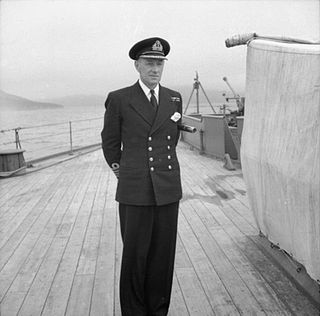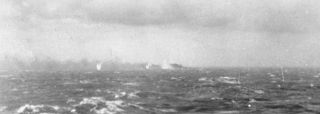Related Research Articles

Five ships of the Royal Australian Navy (RAN) have been named HMAS Sydney, after Sydney, the capital city of New South Wales.
Eleven ships of the Royal Navy have been named HMS Antelope, after the Antelope:
Seven ships of the Royal Navy have been named HMS Prince of Wales, after numerous holders of the title the Prince of Wales.
Two ships of the Royal Navy have been named HMS King George V, after George V, King of the United Kingdom, whilst another was planned:
Eight ships of the Royal Navy have borne the name Renown, whilst three others have borne the name at various stages in their construction:
Thirteen warships of the Royal Navy have been named HMS Revenge:
Two ships of the Royal Navy have borne the name HMS Duke of York, after numerous holders of the title of Duke of York :
Six ships of the Royal Navy have been named HMS Edinburgh, for the Scottish city of Edinburgh. In addition, one ship of the Royal Navy has carried the similar name HMS Duke of Edinburgh.

HMS Hood was a battlecruiser of the Royal Navy (RN). Hood was the first of the planned four Admiral-class battlecruisers to be built during the First World War. Already under construction when the Battle of Jutland occurred in mid-1916, that battle revealed serious flaws in her design despite drastic revisions before she was completed four years later. For this reason, she was the only ship of her class to be completed, as the Admiralty decided it would be better to start with a clean design on succeeding battlecruisers, leading to the never-built G-3 class. Despite the appearance of newer and more modern ships, Hood remained the largest warship in the world for 20 years after her commissioning, and her prestige was reflected in her nickname, "The Mighty Hood".
Eight ships of the Royal Navy have been named HMS Intrepid:
Nine ships and a naval base of the Royal Navy have been named HMS Neptune after the Roman god of the ocean:
Seven Royal Navy ships have been named HMS Duncan, after Admiral Adam Duncan, 1st Viscount Duncan of Camperdown, hero of the Battle of Camperdown.
Ten ships of the Royal Navy have been called HMS Aurora or HMS Aurore, after the Roman Goddess of the dawn.
Four ships of the Royal Navy have been named HMS Formidable with a fifth, the French Formidable, renamed HMS Ham after being captured and recommissioned; a sixth has been announced:
Eight ships or submarines of the Royal Navy have been named HMS Anson, after Admiral George Anson:
Several ships of the Royal Navy have been named HMS Howe, after Admiral Richard Howe:

Sink the Bismarck! is a 1960 black-and-white CinemaScope British war film based on the 1959 book The Last Nine Days of the Bismarck by C. S. Forester. It stars Kenneth More and Dana Wynter and was directed by Lewis Gilbert. To date, it is the only film made that deals directly with the operations, chase and sinking of the battleship Bismarck by the Royal Navy during the Second World War. Although war films were common in the 1960s, Sink the Bismarck! was seen as something of an anomaly, with much of its time devoted to the "unsung back-room planners as much as on the combatants themselves". Its historical accuracy, in particular, met with much praise despite a number of inconsistencies.

John Catterall "Jack" Leach, was a British naval officer. He was the only captain of the battleship HMS Prince of Wales during its short period in service.

The last battle of the German battleship Bismarck took place in the Atlantic Ocean approximately 300 nautical miles west of Brest, France, on 26–27 May 1941 between the German battleship Bismarck and naval and air elements of the British Royal Navy. Although it was a decisive action between capital ships, it has no generally accepted name.
Six ships of the Royal Navy have borne the name HMS Fawn:
References
- ↑ "Battle Honours of RN ships & Naval Air Squadrons". Royal Navy Research Archive.